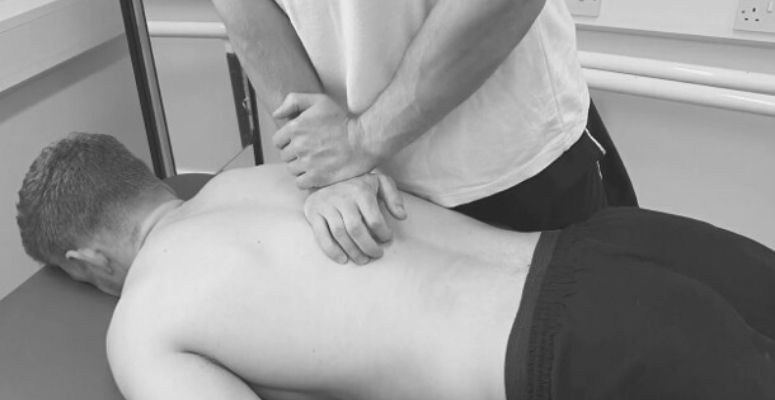What is T4 spinal cord injury? A T4 spinal cord injury refers to damage at the fourth thoracic vertebra, located in the upper to middle part of the spine.
Understanding the severity and implications of a T4 injury is crucial in managing its physical and medical outcomes.
What is T4 Spinal Cord Injury?
The most important factor in your injury affecting your functions is the severity of the spinal cord injury. By ‘level of injury,’ we mean the furthest down your spinal cord that you’ve retained the normal sense and can move about just as you would without cord injury.
A little more anatomical detail: our spinal cord has 31 segments. The term denotes its 31 pairs of nerves that emerge from it at each vertebra and are wholly responsible for our body’s various functions. Here they are, from top to bottom:
- 8 parts are cervical,
- 12 are thoracic
- 5 are lumbar
- 5 sacral
- The third is coccygeal.
The basis for this division is that each part carries out a particular function. Each spinal cord segment receives sensory information from specific areas of the skin, a phenomenon called ‘dermatome’ pseudoscientifically. Simultaneously, every segment of the cord provides innervations for specific muscle groupings that are processes called ‘myotome’.
The segment of the spinal cord controlling the muscles of your trunk or body is the thoracic region. Think of your spinal cord as a critical “bridge” that needs to convey information from your brain to different body parts.
Injuries Affecting the T4 Spinal Level
Spinal cord injuries affecting the level T4 may vary considerably in severity and produce different symptoms depending on the exact site of the injury. Examples of injuries with this level are:
- A total lesion of the spinal cord at the T4 level, meaning there is a complete loss of motor and sensory function below the level of injury.
- An incomplete spinal cord injury at T4, where certain functions might retain high levels while others may not.
- A fracture or dislocation of the vertebrae at the level of T4, with a potential consequence of impairment from spinal cord damage.
These are only a few examples; it is good to remember that every person may vary in their experience with a T4 spinal cord injury.
Impact of a T4 Spinal Cord Injury on Body Functions

Let’s break down how the T4 spinal nerves function. These nerves directly impact the feeling around the 4th intercostal space. In simpler terms, it’s the area nestled between your 4th and 5th rib—usually lining up with where your nipples are.
If these T4 spinal nerves are injured, the results can vary depending on the severity of the damage. In some cases, individuals might find that they can’t feel or move anything from their chest downwards. That’s because the injury to these specific nerves has a broad-reaching effect.
Want to know what functions could be impacted by a T4 spinal cord injury? Here’s how:
Autonomic Function
People with a spinal cord injury above T6 often face a greater possibility of experiencing a condition known as autonomic dysreflexia.
Think of your autonomic nervous system as the backstage manager. It quietly takes care of things that work together, like keeping your body at a steady temperature, regulating an appropriate heart rate, maintaining your blood pressure, and managing your digestion.
But what happens when the spinal cord, one member of this influential team, is injured? Perfect regulation of these life support functions can be thrown out of place.
This is where the role of autonomic dysreflexia comes in. It is a kind of sensory overload in which your body overreacts to irritating stimuli below the injury level.
Imagine you hit a table, and your knee knocks upon impact. Consider what would happen if a reflex inside your body skyrockets your blood pressure. What would your brain do under normal circumstances if it were to send those signals back down without delay to lower the blood pressure?
This is the reason a person with spinal cord injury always needs to tread carefully and vigilantly around things that trigger autonomic dysreflexia. The list of common triggers includes:
- Wearing tight clothing.
- Being exposed to severe weather
- Experiencing skin irritation or pressure sore formation
- Needing to go to the toilet for solid waste or
- Managing a patency issue on the catheter
Balance
Your core is the powerhouse muscles that connect your upper and lower body. They keep you balanced and on your feet.
It can be quite hard if you suffer from a T4 spinal cord injury. This can make a person either paralyzed or even weakened from the chest downward so that it is difficult to hold himself or herself totally upright without help or to be able to stand alone.
But not to worry, below are some simple ways you can work on improving your sitting balance:
- First, you should probably get a trunk brace. If your doctor or your therapist recommends one, it will provide the needed support to help you sit up straight.
- Secondly, a wheelchair seat mold may be considered so that your whereabouts will generally be stable.
- Last but not least, sitting balance exercises should also be performed regularly, gradually increasing the strength of your core muscles to improve your stability.
- Remember to go one step at a time and to celebrate every little victory along the way.
Bowel and Bladder
The failure to control their bowel and bladder could be one major threat to these patients. Failure to determine when their bladder is full leads to occasional accidents.
However, they may be seen to become less physically active, either out of weakness or paralysis. This decreased physical activity is reflected in their metabolism, which slows considerably, affecting the rate at which the body processes food.
Other side effects can include disturbed signals from the bowel leading to the brain; this means that people may not know when they need to go to the bathroom and may also have trouble relaxing the muscles necessary for passing stools.
What does this mean? Typical problems for these individuals might include things like constipation leading to frequent bloating or unexpected bowel accidents if not managed aggressively. This can understandably be a harrowing and hard adaptation to make and is one of the many common problems facing persons with a T4 spinal cord injury.
What is T4 Spinal Cord Injury and its Psychological Impact

These people will have a psychological effect with a T4 spinal cord injury. They will go on to template with life changes. The loss of body functions and failure to be self-mobile will really hit them with feelings of grief, anger, frustration, and depression.
Those with T4 spinal cord injuries should receive emotional support and counseling to help them cope with such emotions. The support of family, friends, and a network of healthcare providers is that system.
This is when a person should find ways to adapt and flourish after the injury. This could be done by finding alternative hobbies and activities that the person may still enjoy doing.
T4 Spinal Cord Injury vs T4 Syndrome
T4 Syndrome is the name given to a spinal condition that produces pain and discomfort in the spine at or about the level generally referred to as the thoracic spine or midback region. Twelve extremely important vertebrae are present within that area of our spinal column, giving us motion and providing much-needed support to our body.
Within each vertebra, there are more specialized parts—facet joints and vertebral discs. If all these parts work perfectly, one won’t notice that one even owns them. However, once they start malfunctioning or general degeneration, either over time because of aging or during a traumatic injury, problems arise.
To Sum Up
Knowing what is T4 spinal cord injury can significantly impact an individual’s life, both physically and emotionally. However, with the right support system and strategies in place, it is possible for individuals to adapt and thrive despite their injury. Remember, take it one step at a time, and celebrate every small victory along the way.

